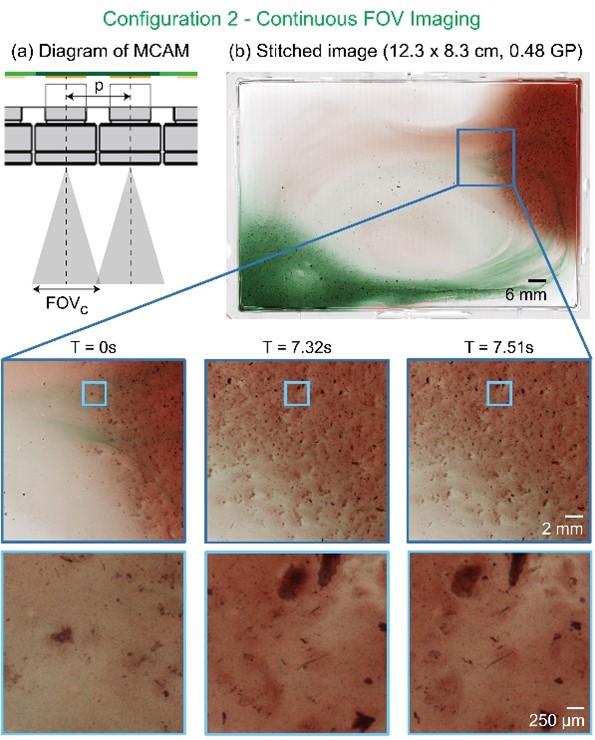Technical Summary Optica 2023
- M. Harfouche, K. Kim, P. C. Konda, S. Sharma, E. E. Thomson, K. C. Zhou, C. Cooke, S. Xu, X. Yang, X. Yao, V. Pathak, R. Appel. C. Cooke, J. Doman, G. Horstmeyer, J. Park, P. Reamey, V. Saliu, E. Naumann and R. Horstmeyer , “Multi-scale gigapixel microscopy using a multi-camera array microscope,” Accepted to Optica (2023). Pre-Print, DOI, Project Page
Overview:
Multi-camera array microscope (MCAM) refers to an assembly of microscopes where each microscope module consists of a lens and a sensor.

Choosing the magnification for all lens-sensor pairs in the array is a crucial design decision that determines three primary modes of operation. Based on the selected magnification, the MCAM can be set up to function in three different modes, namely Tiled, Continuous, and Multi-View.
Configuration 1 – Multi-View Imaging
In this configuration, the fields of view of individual lens-sensor pairs overlap, ensuring that each point in the sample is captured by at least two distinct micro-cameras. As we will demonstrate, adopting a multi-view imaging geometry provides several advantages. For example, it enables stereoscopic imaging for measuring the depth of imaged objects or applying photogrammetry software to collectively generate a height map of the imaged object while constructing the final composite of a large area.

Configuration 2 – Continuous FOV Imaging
The Continuous FOV regime is entered when the magnification is increased past the multi-view scenario, but the entire surface of an object is still viewed by at least one micro-camera. This configuration provides better spatial resolution than the multi-view geometry.

Example video – Dynamic fluid mixture
https://drive.google.com/file/d/1ztdMkhMzlFWy4KwMTlHnaId0mpxUbCk4/view?usp=share_link
Configuration 3 – Tiled High-Resolution Imaging
The tiled configuration does not capture a continuous sample area in a single shot anymore. Instead, it captures data from a separate, non-contiguous sample area.

